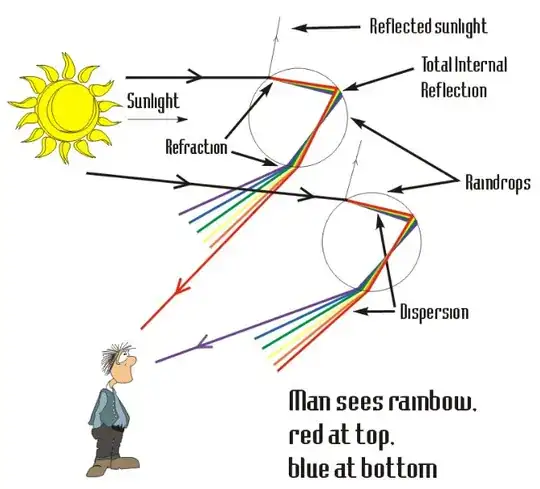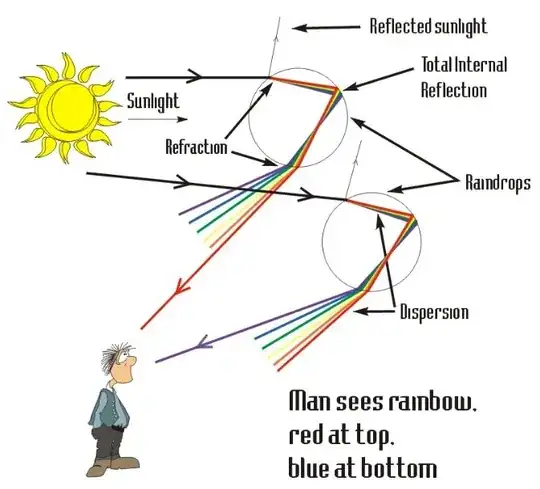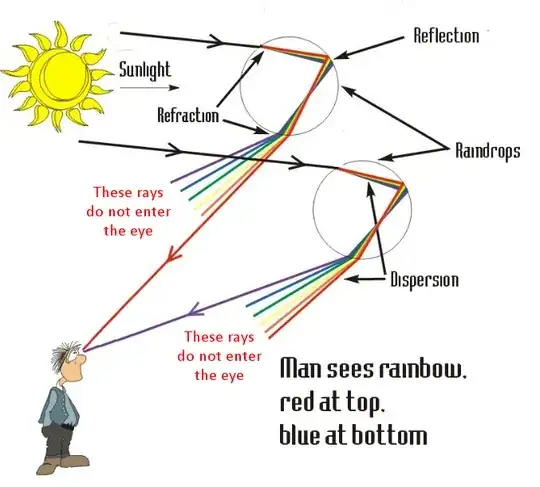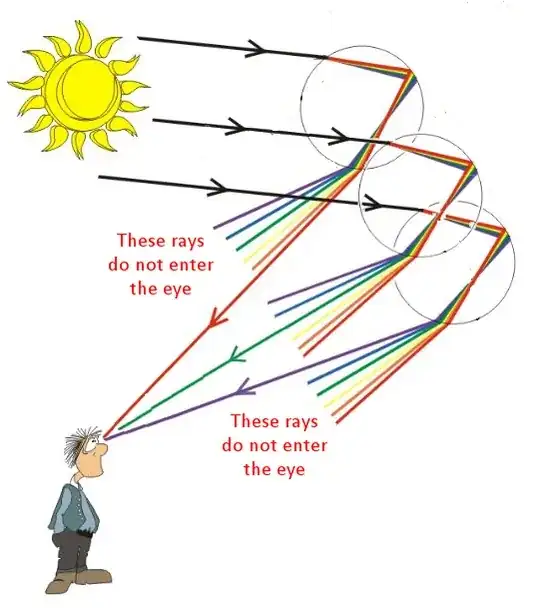My question is tied closely to this one, asked a while back on the website. As far as my understanding goes, a rainbow is formed by sunlight undergoing two refractions and a reflection inside individual water drops, and then falling on our eyes. An upper drop disperses red light the most, angling it towards our eyes and a lower drop similarly angles the less dispersed violet light towards us, after reflection. However, the way it looks to me is that there's no room for any of the other colours to fill the gap between the red and violet light. That pattern seems to read
vibgyo R V ibgyor
from top to bottom, the bold letter indicating the colours seen upon reflection by us. So where do the other colours come into play here? Also, does this pattern indicate that upon moving up in the vertical direction, we would begin to see the rainbow invert its colours?



